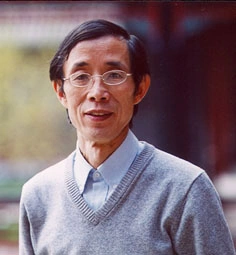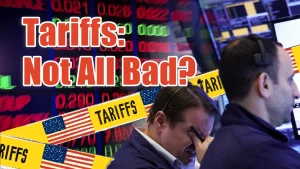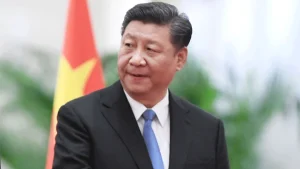Biden’s New China Tariffs: A Reflection of His Deep Understanding of US History
In the midst of the trade war, one of the key arguments wielded by Western countries against China is its classification as a “non-market economy” nation. Within China itself, factions supportive of the US and liberal groups also invoke the principles of laissez-faire capitalism when contesting governmental intervention. Yet, can we pinpoint a single instance in history where a truly laissez-faire market economy existed?
Delving into the annals of capitalism, we find that the explorations sponsored by Portugal and Spain were backed by their respective monarchs. Both Spain and England, for instance, collaborated with pirates, issuing letters of marque and sharing in the spoils. Notably, the British monarchy’s involvement extended to naval affairs, with monarchs donning naval officer attire, and even Queen Elizabeth II holding military ranks during World War II. The genesis of Western colonialism lay in state-capital naval militarism, affirming Adam Smith’s revelation in The Wealth of Nations: “Wealth is power.”
At the heart of the debate between Friedrich Hayek and John Maynard Keynes lies their opposition to central banks, the former advocating a return to privately-run banks akin to those in the Italian city-states. This inclination stems from the primary purpose behind establishing private central banks in England, which was to finance arms races. Hayek, influenced by Marx’s theories, contends that central banks’ monetary policies are the fundamental cause of economic fluctuations. Even during the independent city-states of the Middle Ages, true laissez-faire market economies were absent, as guilds rigorously regulated inter-industry competition to stave off internal turmoil. This regulatory framework curtailed the neoclassical perfect competition, ensuring neither small workshop owners nor craftsmen enjoyed stable livelihoods.
The only case in history that can be roughly regarded as a market economy is the Republic of Venice which operates under an oligarchic democracy dominated by the wealthy. During the Crusades, they raided and plundered the Byzantine Empire under the guise of assistance, hastening its downfall at the hands of the Ottoman Empire. This disruption of the Silk Road contributed significantly to the waning influence of Italian city-states and the ascent of Atlantic coastal nations.
The trajectory of American history further elucidates the ebbs and flows of colonialism, capitalism, and imperialism. The founding figures of the United States were predominantly composed of slave owners and smugglers. The triumph in the American Revolutionary War was intricately tied to the British-French rivalry over North American colonies. Notably, the French navy’s pivotal victory over the British expeditionary force not only aided America’s cause but also catalyzed France’s financial collapse, ultimately sparking the French Revolution. Rather than return a kindness, American elites seized the moment, acquiring vast French colonial territories in the American Midwest from Napoleon at remarkably low prices, thereby facilitating the expansion of the original thirteen states from the eastern Atlantic coast to the fifty states spanning the Pacific coast.
During the Civil War era, the North’s embrace of protectionism bolstered the burgeoning American manufacturing sector, enabling it to contend with Britain’s more advanced industry. Conversely, the South, advocating for agricultural export markets, championed free trade principles akin to those endorsed by Britain. Notably, the establishment of central banks in the United States on two separate occasions stemmed from the exigencies of issuing war bonds, necessitating constitutional amendments.
The Great Depression, a consequence of the protectionist policies adopted by the major powers following The World War, witnessed the United States, Britain, and France embracing trade protectionism.
Roosevelt’s New Deal was not enough to completely solve massive unemployment, and the U.S. Supreme Court even ruled that was unconstitutional. The pathway out of the Great Depression hinged on America’s entry into World War II, which catalyzed the development of the military-industrial complex, deploying scores of unemployed workers to the battlefield.
After WWII, the American military-industrial complex faced a downturn as its market waned, and the influx of jobless veterans posed potential social unrest. To address America’s “excess capacity,” the Marshall Plan emerged as a solution, wherein the United States allocated funds to war-ravaged European nations and Japan, enabling them to purchase surplus American goods while securing dominance in European and Japanese markets. This endeavour entailed significant talent and equipment acquisition from Europe, bolstering American education and research institutions. Notably, advancements in nuclear energy and space technology heavily relied on talent from Western Europe, notably Germany. Additionally, the provision of scholarships for discharged veterans propelled economic prosperity during the post-war Baby Boomer era, lasting three decades. America’s strategy for surmounting successive economic crises post-war consistently revolved around war mobilization.
The chief editor of the Journal of Post Keynesian Economics underscored that even proponents of “small government,” like Reagan and George W. Bush, who champion tax cuts, are essentially advocates of “military Keynesianism,” rooted in state-capital militarism. The US Department of Defense and the Central Intelligence Agency (CIA) stand as the world’s largest state-owned enterprises, with the CIA extending its purview to global mineral resource investigations, reaching their tentacles far beyond China’s Security and Assets Supervision Administrations.
The primary source of basic research funding for scientific endeavours in the United States stems from the military-industrial complex, encompassing entities like the Atomic Energy Commission (later the Department of Energy), the National Science Foundation, as well as branches of the military such as the Navy, Air Force, and research foundations under NATO. Both private and state universities benefit from significant tax-exempt foundations, and placement on the land that the US government robbed from indigenous peoples. Harvard University leads the pack among private universities with an impressive endowment of up to $53 billion, while the University of Texas at Austin boasts a $6 billion foundation. Collectively, the total endowment across the US approximates $840 billion, dwarfing China’s national foundation, which provides only about $4.4 billion in annual research funding.
For high-tech companies like Boeing in the US, research funding primarily derives from defence contracts, with military technologies transitioning to civilian applications post-maturation. This phenomenon has birthed innovations such as the internet, mobile phones, navigation systems, and even camping gear, all stemming from the low-cost or free transfer of military technology to civilian domains.
However, in China, the State-owned aviation and defence industries often yield meagre profits, necessitating diversification into civilian sectors like automobiles, household appliances, and real estate to subsidize defence research. This scenario prompts a pertinent question: Is there more market competition in China’s mixed economy or in the United States? How is it that China has become an “unfair competitor” in a non-market economy when the subsidies obtained by Western developed countries through the arms race and agricultural protection are much higher than those obtained by China, which is a country with a large population and poor resources?
Editor: Charriot Zhai



